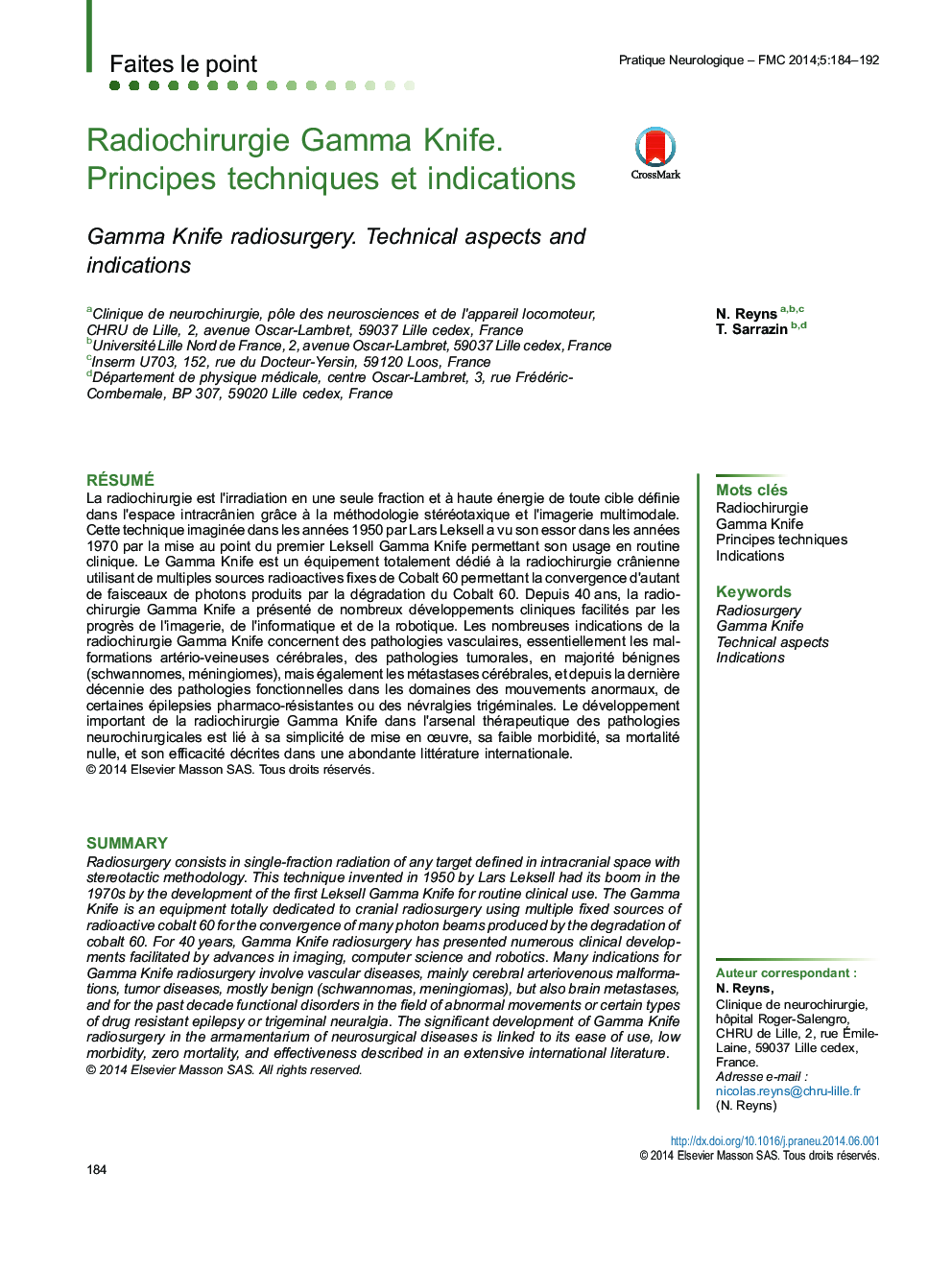| Article ID | Journal | Published Year | Pages | File Type |
|---|---|---|---|---|
| 3087265 | Pratique Neurologique - FMC | 2014 | 9 Pages |
Abstract
Radiosurgery consists in single-fraction radiation of any target defined in intracranial space with stereotactic methodology. This technique invented in 1950 by Lars Leksell had its boom in the 1970s by the development of the first Leksell Gamma Knife for routine clinical use. The Gamma Knife is an equipment totally dedicated to cranial radiosurgery using multiple fixed sources of radioactive cobalt 60 for the convergence of many photon beams produced by the degradation of cobalt 60. For 40Â years, Gamma Knife radiosurgery has presented numerous clinical developments facilitated by advances in imaging, computer science and robotics. Many indications for Gamma Knife radiosurgery involve vascular diseases, mainly cerebral arteriovenous malformations, tumor diseases, mostly benign (schwannomas, meningiomas), but also brain metastases, and for the past decade functional disorders in the field of abnormal movements or certain types of drug resistant epilepsy or trigeminal neuralgia. The significant development of Gamma Knife radiosurgery in the armamentarium of neurosurgical diseases is linked to its ease of use, low morbidity, zero mortality, and effectiveness described in an extensive international literature.
Keywords
Related Topics
Life Sciences
Neuroscience
Neurology
Authors
N. Reyns, T. Sarrazin,
